
Create an Amazon Business Account
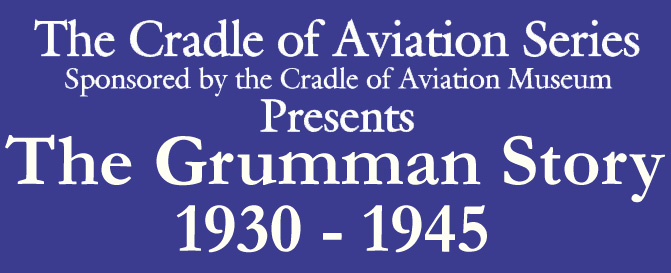


With the FF-1 nearing the beginning of its production run, Grumman’s management turned their attention to something close to Leroy’s heart. For years the Navy was operating Loening OL amphibians. However, being first flown in 1923, these were badly in need of replacement. Grumman retained the basic layout of the Loening, but the new design was far more refined. By deepening the centerline float, Grumman was able to lower the thrust-line of the engine, which greatly improved forward vision. Designed with an all-metal semi-stressed monocoque fuselage, the new airframe was quite advanced for the time. Wing construction was also of aluminum alloy, with fabric covering. When the design team was satisfied with their proposal, it was forwarded to the Navy, who immediately issued a contract for one prototype.
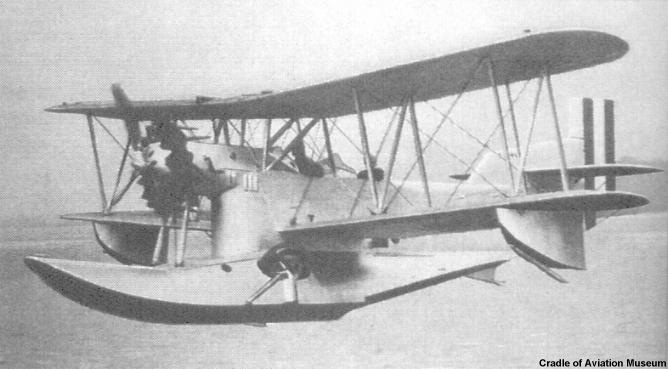
April 24, 1933 presented Grumman’s personnel with the promise of an unusually warm spring day. The XJF-1 was carefully pushed out onto the apron and preparations were then made for the amphibian’s first flight. Fuel and oil were checked and rechecked. As a small crowd of Grumman employees stood by, the engine was started and the ungainly aircraft taxied out. Positioned at the end of the field, the test pilot performed his pre-take-off checks. Everyone heard the engine increase in speed and noise, then die down after a magneto check. Seconds later, they heard the power come up again as the pilot advanced the throttle until the engine’s manifold pressure stabilized at 30 in/hg. Brakes were released and the big biplane began to roll. Slowly feeding in power, the pilot guided the XJF-1 down the field. Acceleration was much better than anyone would have imagined. Without the slightest backpressure on the control stick, the plane flew itself off the field. A pronounced wobble was seen by those watching from the ground as the pilot cranked the gear retraction handle around for 47 exhausting turns to pull up the landing gear. Entering a gentle bank, the XJF-1 turned north and disappeared from sight.
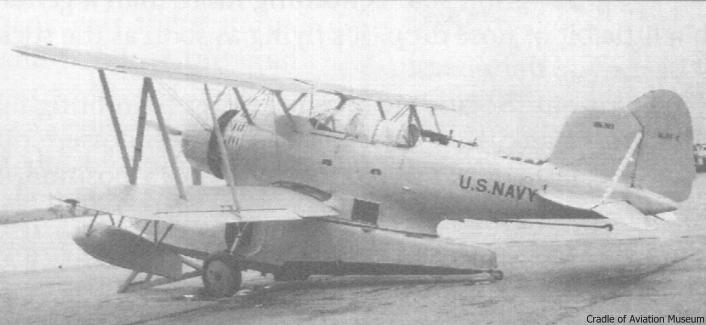
This first flight and subsequent test hops would reveal a necessity
to reshape the vertical stabilizer. Some other minor details would
require attention, but once again, the basic design proved to be
sound. After the Grumman was satisfied with their efforts, the
amphibian was turned over to the Navy.
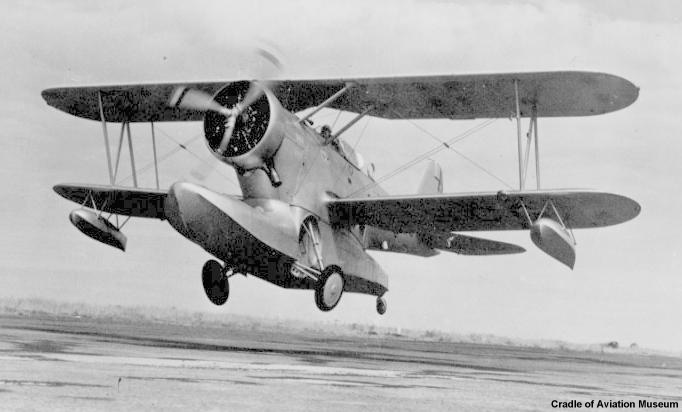
Navy testing revealed a baseline improvement over the
Loening that was nothing less than startling. Maximum and cruise speeds
were very impressive, being more than 40% faster than the older
aircraft. Climb rate was more than 50% greater than the latest OL-9.
With a service ceiling of 25,000 feet, the Grumman could climb
nearly 11,000 feet higher than the tired, old Loenings. Being fully
equipped for carrier operations, the XJF-1 was exactly what the Navy
wanted and needed. With few changes, a contract was issued for
twenty-seven JF-1s with the first to be delivered in late 1934.
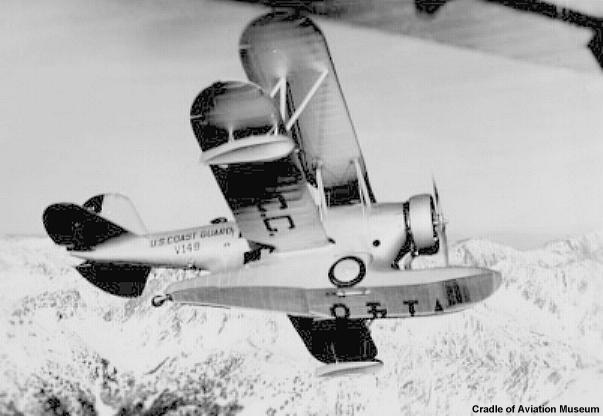
Named the “Duck”, the JF-1 would evolve through six major variants.
Seeing that the JF-1 would be perfect for their needs, the U.S. Coast
Guard ordered 14 of the amphibians, without arresting gear and
ordered that the Pratt & Whitney R-1830 engine of the JF-1 be
replaced with a larger diameter Wright R-1820. Designated the JF-2,
these Ducks would go on to give sterling service for many years.
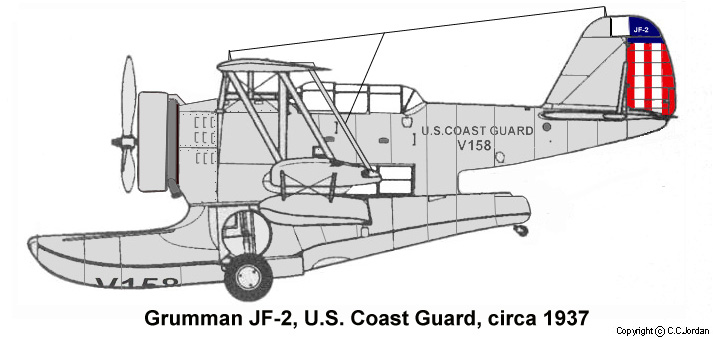
Later, the Navy would also adopt the R-1820 engine, and these powered the JF-3.
In 1937, the designation was changed again with the
improved J2F-1. This was the first variant with noticeable modifications
to the airframe. The rear of the float was extended and the area
above this was substantially filled in with new structure.
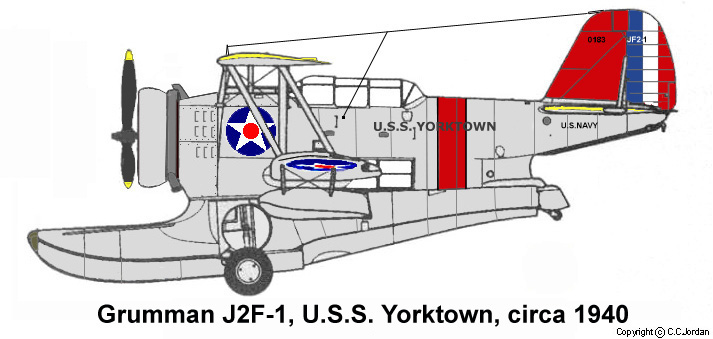
Earlier Ducks had a strut connecting the upper and lower ailerons. This was done away with on the J2F-1 and the linkage was moved to the inside of the wing. With the coming of the war, Grumman needed every bit of production capacity for fighter production. As a result, the last 330 Ducks ordered were to be built under license by Long Island’s Columbia Aircraft Corporation. Despite not being built by Grumman, the Navy gave them the Grumman designation of J2F-6.
Even as Grumman tooled up to begin production of the FF-1, another new fighter design was underway. It seemed only logical that the performance advantage of the FF-1 would be very short lived. To maintain their position, Grumman certainly understood that continuous research and development was an absolute necessity to remain competitive.
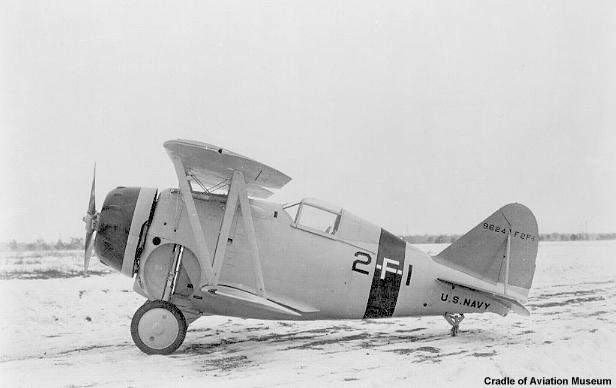
It would be difficult to improve performance with another two-seat fighter and Grumman prepared a proposal for a new carrier borne single seat fighter. Being very much pleased with the FF-1, the Navy did not hesitate to give Grumman a contract for a prototype designated the XF2F-1. The general arrangement would be similar to the two-seater FF-1. However, the overall dimensions would be considerably reduced. Carrying over the same landing design only magnified the squat, tubby appearance of the new biplane. While production of the FF-1 proceeded, the XF2F-1 was completed and prepared for its first test flight. Rolled out into the Long Island sunshine, the little biplane gleamed in its new paint. Its all-metal fuselage was state of the art. Powered by twin row Pratt & Whitney R-1535-44 radial generating 625 horsepower, the prototype simply leapt into the air after a short take-off roll. The XF2F-1 demonstrated a top speed of 229 mph., and climbed at the phenomenal rate of 3,130 feet per minute. Maneuverability was equally outstanding. After initial testing was completed by Grumman test pilots, the prototype was delivered to the Navy at Anacostia Naval Air Station. Not unexpectedly, the Navy was pleased to find that the aircraft was even better than they had anticipated. Just five months after its first flight, a procurement order was issued to Grumman on March 17, 1934. Within a year, the first production F2F-1 fighter was delivered and accepted.
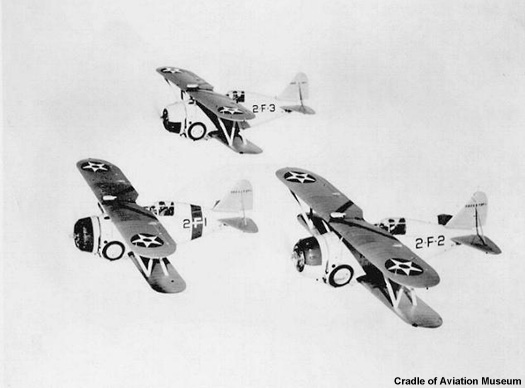
When the F2F-1 entered into service, it appeared with a refined
cowling and a more powerful R-1535-72 engine. Top speed had increased
slightly to 231 mph, and the rate of climb had dropped slightly due to
the weight of added equipment. Still, performance was considered
excellent and the fighter proved to be extremely popular with its
pilots. The first squadron to receive the new fighter was VF-2B
aboard the U.S.S. Lexington. Other squadrons to fly the F2F-1 were
VF-3B on the U.S.S. Ranger and VF-5 deployed on the U.S.S. Wasp.
These fighters would remain in front line service until they were
eventually replaced by the F3F and later, by new monoplane fighters
in 1939 and 1940. Though relegated to training duties, the F2F would
soldier on throughout the war giving good service to a new generation
of Naval Aviators.

